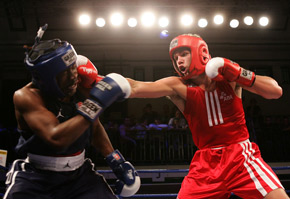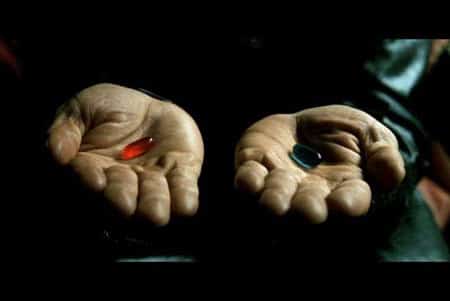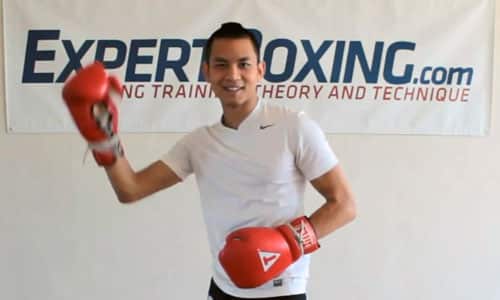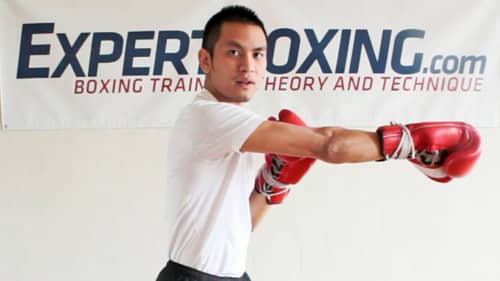Q: When fighting an Amateur fight, do you throw fast punches and move..or go for the knockout if you have power? What do the judges prefer? – Marco R.

Marco’s original question:
When fighting an Amateur fight, what should be your mind set? Do you throw weak fast punches and dance, if you have heavy hands do you go for the knockout even though theres headgear and its scored like a normal punch? What do the judges like to see?
A: Amateur Boxing is scored purely on points. A hard punch and a soft punch scores the same — 1 point. I must say that 3 clear hard punches is much more likely to be counted as 3 full points whereas a quickly flurry of 10 small punches may not get full credit. A punch that scores a knockdown still only scores 1 point.
More often then not, amateur boxing resembles a hit-&-run game of freeze tag in the ring moreso than a slugfight. The Olympics is probably the best example of how you should fight your amateur fight: which is to throw dozens of punches but be constantly on the move. It’s only 3 rounds so you should be in shape to throw a lot of speed punches and not get tired.
Again, the goal of amateur boxing is to score points, not to knockout your opponent. If you spend too much time trying to knockout your opponent and can’t make it happen, you may lose a decision if it turns out he’s been landing more punches on you. Amateur boxing is not like professional boxing where the fighters have to hurt each other and it’s easier since they don’t wear headgear.











How likely are knockouts in ammy bouts compared to professional bouts? If your not trying to KO someone don’t people tend to fight alittle more like out-boxers? Just wondering how good things work out for ppl who just want to stay in the pocket and trade.
knockouts happen all the time in amateur bouts
It’s not always because of power, sometimes it’s because one guy is so much more skilled than the other. Or one guy is in much better shape. A lot of times, the ref will jump in and stop the fight if one fighter takes 10 straight punches without returning. This is something that happens very easily when you’re caught up in the fight. You’re trying to take a break and next thing you know, the fight is over. Sometimes the KO happens because one guy cut a lot of weight and is 15 pounds bigger than his opponent.
Low-level amateurs are typically brawlers and endurance brawlers. Mid-level amateurs pick and choose their shots more. High level amateurs fight like pro’s mixing in hard shots and fast shots. Olympic dudes are straight up hit & run.
You have to be prepared to fight all kinds of styles. Trading on the inside works better for local-level bouts. At the higher level, you’re fighting semi-pros that will move on you all day long.
all titles
Great advice, if only there was something like this when I was boxing.
Adapt to be clever in boxing
Be it physical, mental, technical or tactical aspects of amateur boxing you find yourself good or bad at. One thing in an active, experienced and long career you’ll need is to adapt to your opponnets physical attribultes such as his height. There are genaralisations in boxing for example using a jab is a common punch taught by trainers and often is the first punch tutored. When a boxer uses a punch bag it remains the same height in comparison to your opponnets you fight. In one fight your opponent may be one inch smaller than you, in another your opponent guy may be two inches taller than you whcih makes adifference to who ever gets the range first. Pad work is different with talelr and smaller pad men. Anyway my belief is if he’s taller than you then jump in with a straight punch first at the same time you throw it and quickly set your feet the way your shown doing pad work as you get into the comfortable range and then throw two or three the technical way but atleast he doent have a cheap way of using his reach. If you walk in he’ll use his reach and it’s too easy, he doesn’t need to think outside the basic technique on throwing the punch. Another one is to let a southpaw get his foot outsid eyour first, quickly change your to the outside of his and pull his heel open wide to pull him off balance and then throw a straight punch, it doesnt need to be hard once you do it right and he’ll be off balance so a moderate punch will suffice the strength you need because he’s off balance. All in micro seconds, practice these tricks, many times, there are two, there are many and when your good at them do them fast, so fast the referee wont, and will not penalise you for them. Do it right and not many will know what you did. You need to master them and be a good judger of distance and also a good adapter aside the generalisations you get taught in boxing gyms. Hope this helps. http://www.facebook.com/profile.php?id=1795356575&sk=photos#!/pages/Thre-Irish-Rural-amateur-boxing-communities/206533416057658 🙂
Physical, mental, technical, tactical, social and spiritual – all sides to a fighter/athlete. They all need coaching, (David) (2017)
I find myself throwing dozens of straight punches. Both to the head and body but hardly any hooks or uppercuts. How can I begin to implement them more into my game?
By throwing them more? It also helps to get closer as those punches don’t have the same range as straight punches.
As always, I love your posts. Great answer! The only time I’ve seen a different outcome is when I saw a fighter who was so aggressive and full of endurance, he threw fast and hard punches from bell to bell. Again, you have 3, 3 minute intervals to get as many points as possible. So while this guy’s strategy was questionable (I say this because if he had been fighting a better opponent, he would have looked like a bull in a China shop). But in this fight, his opponent tried going blow for blow with him, and he just did not have the strength, power, speed, endurance, etc. to keep up with the Tasmanian Devil. But on the other hand, if you look back at Mike Tyson’s amateur career, it wasn’t as great as it was after becoming a pro. He actually lost amateur bouts against fighters that he destroyed in the pro’s. So, I agree with you. But there are many levels of amateur (novice, Jr, Sr, etc.). If you are not at an elite level, keep your head in what is going on, practice, and trust your instincts, listen to this guy’s answer, and you’ll be fine.
I’m right with you, man! For the most part…the amateurs doesn’t always favor crazy all-out brawling but it does work. We had one guy in the gym was a great boxer, can brawl too….and he got eliminated early from nationals because of some crazy wild heavyweight who just ran him over. And it wasn’t like our guy was overwhelmed and caught cold, he fought back but just couldn’t keep him off.